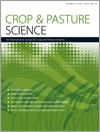CP17418Screening wild progenitors of wheat for salinity stress at early stages of plant growth: insight into potential sources of variability for salinity adaptation in wheat
Despite numerous studies indicating that wild relatives of wheat respond well to salinity stress, no work has been undertaken to compare these species in response to this stress. We investigated the degree of resilience in an extensive collection of ancestral wheat accessions in terms of physiological parameters and enzymes that scavenge reactive oxygen species. Our results show that several wild relatives of wheat with alien genomes such as C, DC, and Ab had appropriate response to salinity stress by increasing enzymatic antioxidants.




